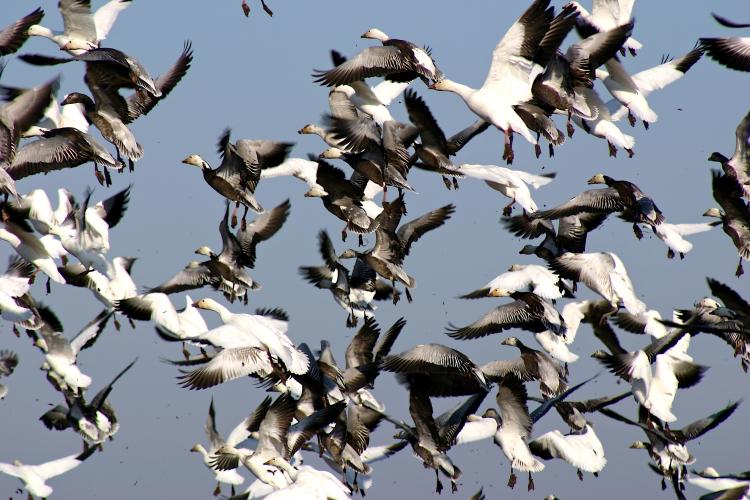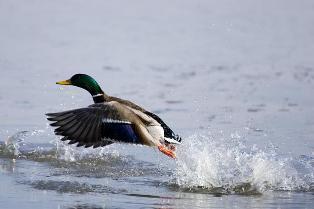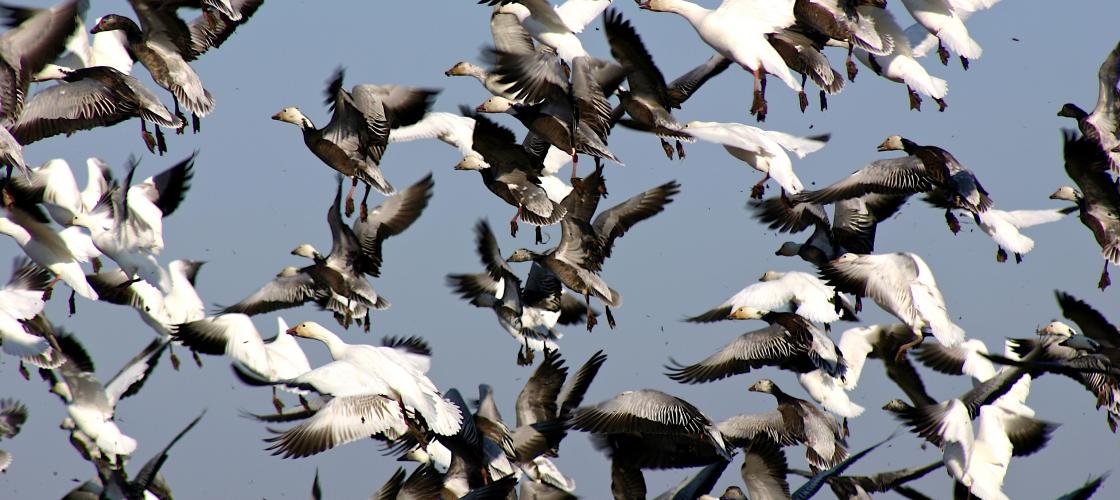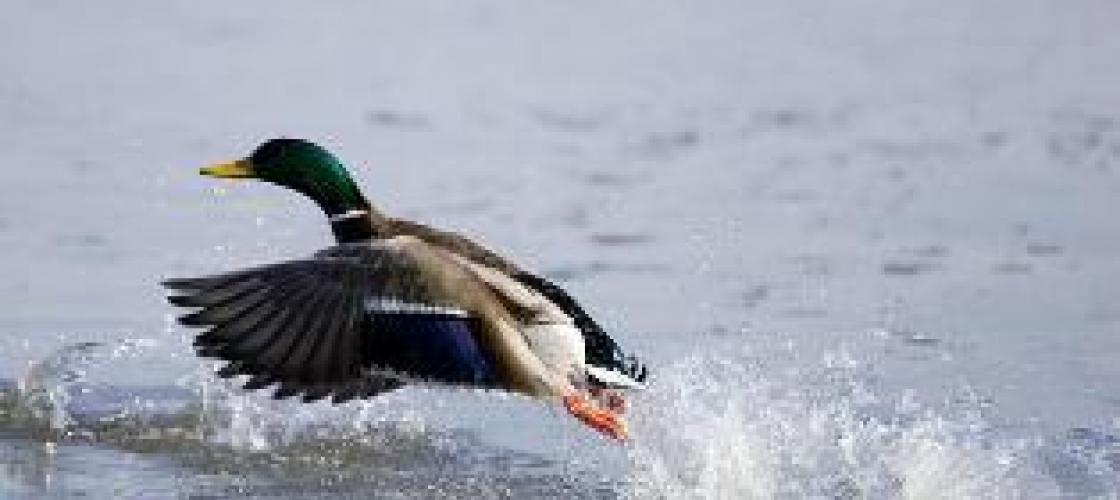For the next few months, thousands of quacking, honking ducks and geese will be winging their way through our state. Most waterfowl traveling through this region follow a path known as the Mississippi Flyway. Ducks and geese that travel along this flyway in the fall are coming from their nesting areas in the upper Midwest and southern Canada. When ponds and lakes in the north start to freeze and food becomes scarce, ducks and geese move southward to warmer climates.
Blue-winged teal and pintails are the first ducks to arrive. The teal's powder-blue wing patches and the pintail's sharply pointed tail feathers make them easy to identify as they feed in ponds and marshes. The next batch to come through include ringnecks and scaup.
November's chilly winds will push these birds further south, but by then, large numbers of mallards will be here. Migrating Canada geese will arrive in early winter. Also stopping over around the same time are divers, several kinds of black and white ducks that rest and feed in the rough, frigid water of large lakes and rivers. These include common merganser and goldeneyes. Finally, there's the late arrival of the snow geese in December.
Some of these migrant waterfowl spend all winter in the Midwest. Others travel farther south. Why not plan a day trip this fall to see ducks and geese in flight and on the water. Don't forget to bring your camera.
Scroll through the Media Gallery below to see video, photographs and artwork as well as audio clips to hear what migrating waterfowl sound like as they fly.
Mallard Mania
You may spot the mallard on its way south this fall.
- Mallards are a common migrant on lakes, rivers, ponds, and marshes.
- They are a locally uncommon summer resident, nesting along lakeshores and in marshes statewide. They are a very common resident in winter, even during severely cold weather when most other waterfowl migrate farther south.
- Mallards are perhaps the most common “dabbling duck” or “puddle duck” in America. They dip their heads underwater, the tail pointed up, and rarely dive.
- They can take flight directly from the water’s surface without needing a running start.
- Mallards form pairs in fall. The females make nests and lay eggs in early spring.
Learn more by visiting our Field Guide.








Recent Posts
























